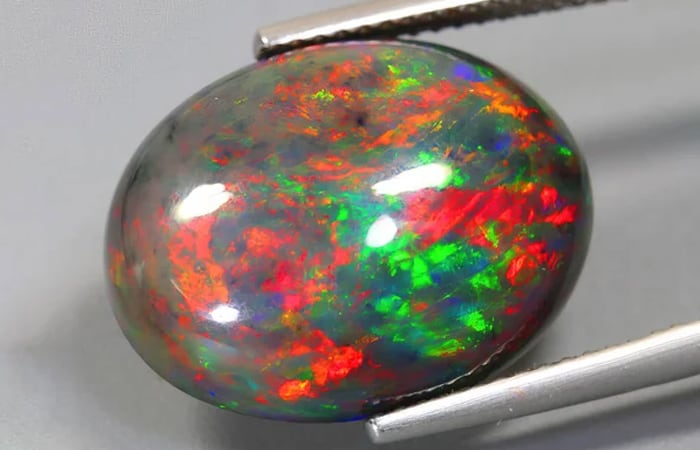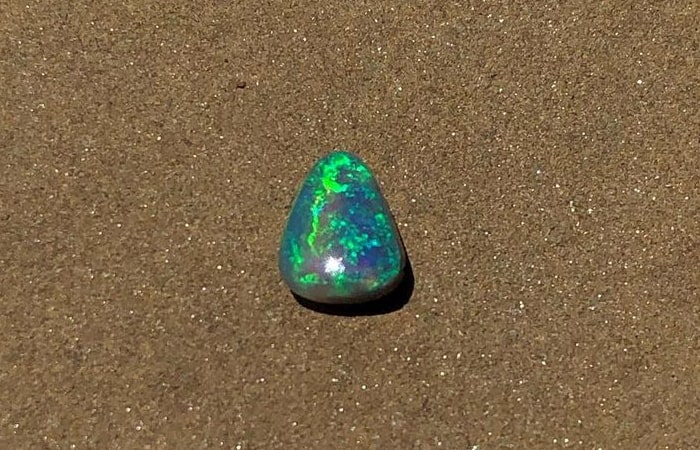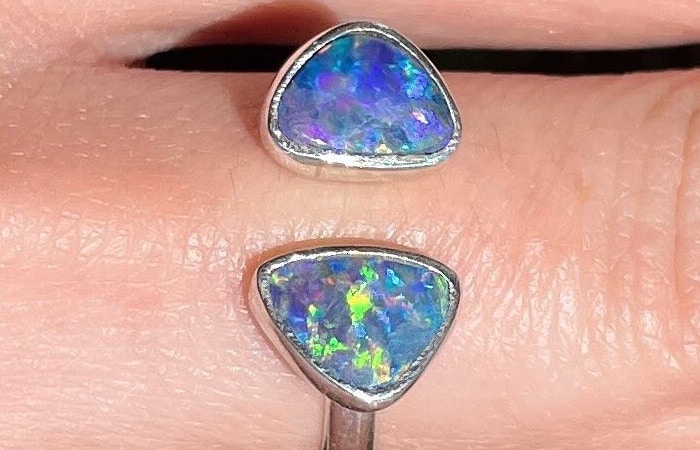Opal is a birthstone that showcases a one-of-a-kind play of color. Some people say that it resembles lighting, fireworks, or galaxies trapped within the stone. The colors and patterns that result from the interaction of the stone with light make every piece of opal unique and distinct from others.

Considering the unique display of colors and patterns of opal, buying a fine opal is similar to buying a piece of fine artwork. There are also several types of opals, including black opals, white opals, crystal opals, and boulder opals.
There is no such thing as wrong or right when it comes to buying an opal that appeals most to you. However, it is still important to know what to look for in the first place.
Just like people, opals have unique individual personalities and no two opals in this world are the same. The body tone of the stone is the most crucial factor here. Others are the play of colors, color intensity, base density, brightness, shape, weight, the region where the stone was mined, flaws, and the price of the jewelry piece where the opal is set.
Factors to Consider when Buying Opal
The price of opal per unit ranges from $10 to $6,000 per carat. The most expensive one is the Australian black opal which costs $10,000 per carat.
The most in-demand black opal starts for $60 per carat at 0.2 grams and can go as high as $10,000 per carat. White opal, which is more common, is priced at $10 to $150 per carat.
Australian opal is the most valuable and costs $10 to $6,000 per carat, while Mexican opals have price points ranging from $7 to $300 per carat.
It is important to remember that this stone is most renowned for its fire quality and a stone may be considered synthetic and low quality if it has the absence of fire. If the opal stone has any crack, it means that it already lost its moisture.
Opals are available in a wide range of sizes. Since the stone has a relatively lower density than other gemstones, you can find it comfortable enough to wear even large sizes of opals. Some of the most common sizes for most of the opal cabochons that are set in pieces of jewelry are 8×6, 7×5, and 6x4mm.

The overall outline or shape of an opal might affect its value as well, with some shapes being more desirable compared to others. The most popular shapes of opal include round, pear, and oval. Opals are also often polished into free forms or shapes, often called baroque. This is to maintain yield or showcase a more dominant play of color observed with the stone facing upward. This could also be to form a thicker color bar.
Colors
Color is the most critical factor to evaluate the value of an opal. The clarity of colors, the number of existing colors, the play of color coverage, and the brightness of fire must all be taken into consideration.
Brightness of Fire
The play of colors or brightness of fire of opal is graded on a scale of 1 to 5. Opal can be faint, dull, bright, very bright, and brilliant.
Clarity of Colors
The clarity of colors of opal is evaluated based on saturation, tone, and hue. A bright pure blue, for example, has a higher value than a greenish-blue or light blue. Pink is also highly valued when it comes to opal although less so than pure red ones.
Coverage
Coverage is one of the distinct elements of the coloration of an opal. It pertains to the amount of surface that shows the play of color. The gem’s entire crown should ideally show fire. The value is lower if there is less area covered.
Centering is essential as well. The best play of color must be centered to achieve the highest value. Opals with off-centered best play of color or one located to the sides have a lower value.
Number of Colors
The opal is more valuable if more colors are visible. Greens and blues are the most popular colors, with warm colors being less common, such as red, pink, orange, and yellow. The value of opal will be higher if there is a high number of existing warm colors. Purple and violet are the least common opal colors, but these have a lesser effect on value compared to orange or hot red.

Clarity
Some of the true inclusions in opals are healed fractures, non-opal spots, sand, fractures, fine strands or webbing of potch or the sandstone between color areas. The effect of these inclusions on value is directly related to their effects on the gem’s appearance.
Transparency is also more important in white-colored or lighter-toned opals. If these tones or hues have a transparency degree, it increases the value since the stone’s play of color becomes more visible. Near-colorless or completely transparent colorless opal often attains a premium.
Cut
A high dome featuring even proportions is the ideal cut for opals although only a handful of opals allow for such shape. Many are thin with little impact on value. All higher grades must have very good to excellent quality of the polish.
An uneven cut will reduce the value of an opal. Similar to all cabochons, an opal must be symmetrical once viewed from the ends and sides. The cut grade is lower if the symmetry is more uneven when viewed from the ends and sides instead of the top.
Carat Weight
An opal’s weight is measured in terms of carats, with 1 carat equivalent to 0.2 grams. Opal prices are ideal for stones that are 2 to 5 carats up to 10 carats. Even though opals larger than this are prized, these are less practical for jewelry purposes, reducing the carat or value of the stone.
Setting
Protective settings, particularly for ring use, will help give you peace of mind that you can enjoy your opal stone for many years. Cage-type designs, raised prongs, solid backings, or bezel settings, for example, can keep your opals safe from scratches and blows. Opal triplets and doublets can also improve the durability of the stone itself.
Conclusion
When buying opal, you should determine first the specific type of opal you are dealing with and consider the other factors of value. Check the quality of iridescence, with the play of light preferably visible from the different angles with strong patterns of color that represent a range of colors. Transparency must also be considered because greater transparency means higher value.



